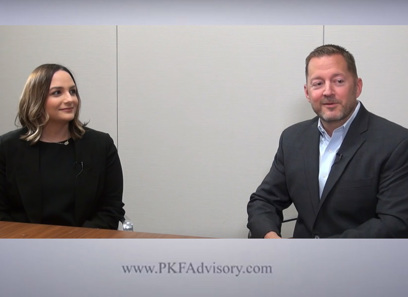Future-Proof Your Organization: Key Cybersecurity Forecasts You Need to Know
As businesses challenge the accelerating pace of electronic transformation, understanding the evolving landscape of cybersecurity is important for long-term strength. Predictions suggest a substantial uptick in AI-driven cyber threats, along with enhanced regulative analysis and the critical change towards Absolutely no Trust Style.
Increase of AI-Driven Cyber Threats

One of the most worrying developments is the use of AI in producing deepfakes and phishing plans that are incredibly persuading. Cybercriminals can make sound and video content, impersonating execs or trusted people, to control victims right into revealing delicate information or authorizing deceitful deals. Additionally, AI-driven malware can adjust in real-time to escape discovery by standard security actions.
Organizations need to acknowledge the immediate need to reinforce their cybersecurity frameworks to fight these evolving threats. This includes investing in innovative threat detection systems, cultivating a society of cybersecurity understanding, and executing robust incident response plans. As the landscape of cyber threats changes, positive actions end up being important for safeguarding sensitive data and preserving organization stability in a progressively electronic world.
Boosted Emphasis on Data Privacy
How can companies properly navigate the expanding emphasis on data personal privacy in today's digital landscape? As regulatory structures evolve and customer assumptions increase, companies must prioritize robust data privacy techniques.
Purchasing staff member training is critical, as team recognition directly affects information defense. Organizations ought to foster a culture of personal privacy, motivating staff members to understand the significance of protecting delicate info. In addition, leveraging innovation to boost information safety is important. Carrying out innovative security techniques and safe information storage services can considerably reduce risks related to unapproved access.
Partnership with lawful and IT groups is important to straighten data privacy campaigns with organization purposes. Organizations ought to likewise engage with stakeholders, including clients, to interact their commitment to data personal privacy transparently. By proactively attending to data personal privacy issues, organizations can construct trust and improve their online reputation, inevitably adding to long-lasting success in a significantly scrutinized electronic environment.
The Shift to Absolutely No Depend On Style
In action to the evolving danger landscape, organizations are official source significantly embracing Zero Count on Architecture (ZTA) as a fundamental cybersecurity approach. This approach is asserted on the principle of "never count on, constantly confirm," which mandates constant confirmation of customer identifications, tools, and information, despite their place within or outside the network border.
Transitioning to ZTA entails implementing identity and accessibility monitoring (IAM) remedies, micro-segmentation, and least-privilege access controls. By granularly controlling accessibility to resources, organizations can mitigate the risk of insider hazards and minimize the impact of outside violations. ZTA includes robust monitoring and analytics abilities, permitting companies to detect and respond to anomalies in real-time.

The shift to ZTA is also sustained by the boosting fostering of cloud services and remote work, which have increased the strike surface (7 Cybersecurity Predictions for 2025). Standard perimeter-based protection designs are inadequate in this brand-new landscape, making ZTA an extra resistant and flexible framework
As cyber risks continue to grow in sophistication, the fostering of Absolutely no Count on concepts will certainly be crucial for organizations looking for to protect their possessions and keep regulative conformity while ensuring service continuity in an unpredictable setting.
Regulative Changes on the Perspective

Upcoming regulations are expected to deal with an array of issues, including information privacy, breach alert, and case feedback protocols. The General Information Protection Law (GDPR) in Europe has set a precedent, and comparable frameworks are emerging in other areas, such as the USA with the recommended federal personal privacy laws. These regulations frequently impose stringent fines for non-compliance, stressing the demand for organizations to prioritize their cybersecurity measures.
Additionally, sectors such as finance, healthcare, and crucial framework are likely to face much more rigid requirements, mirroring the delicate nature of the data they handle. Conformity will not simply be a legal obligation yet a vital component of building count on with clients and stakeholders. Organizations must remain ahead of these changes, incorporating regulatory demands into their cybersecurity approaches to make sure strength and secure their properties efficiently.
Significance of Cybersecurity Training
Why is cybersecurity training a crucial component of an organization's protection method? In an age where cyber risks are significantly advanced, companies must identify that their staff members are typically the first line of protection. Effective cybersecurity training gears up staff with the knowledge to identify possible hazards, such as phishing assaults, malware, and social engineering tactics.
By cultivating a culture of safety and security understanding, companies can substantially reduce the risk of human mistake, which is a leading source of information breaches. Routine training sessions guarantee that employees remain educated regarding the most up to date risks and ideal methods, consequently boosting their capacity to react appropriately to events.
In addition, cybersecurity training promotes compliance with regulatory demands, lowering the danger of legal repercussions and financial penalties. It additionally empowers workers to take ownership of their function in the company's safety and security structure, resulting in an aggressive as opposed to reactive approach to cybersecurity.
Conclusion
In final thought, the evolving landscape of cybersecurity needs aggressive measures to attend to emerging threats. The increase of AI-driven assaults, coupled with increased data privacy worries and the shift to No Trust Style, demands a detailed technique to safety.
Comments on “Uncover 7 Cybersecurity Predictions for 2025 and their impact on digital security.”